
Prepared remarks of Laura L. Lott
President & CEO of the American Alliance of Museums
May 27, 2016
Opening session of the AAM 2016 Annual Meeting & MuseumExpo
Good morning! Welcome to the 2016 American Alliance of Museums’ Annual Meeting!
Nearly 6,000 museum professionals from across the country and around the world have gathered in Washington D.C. this week to talk about museums – and the themes of power, influence and responsibility.
About 1,500 of you are attending an AAM Annual Meeting for the first time! Welcome!!
And I know at least one of you is attending your 40th AAM Annual Meeting – my friend Ellen Ferguson from the Burke Museum. Amazing!
Skip over related stories to continue reading articleWe’re also pleased to welcome the largest student attendance on record – and an impressive group of young professionals joining us with the support of fellowships. Welcome – today you join an incredible community of colleagues from an extraordinary array of institutions!!
We are historic sites. We are natural history museums, children’s museums, presidential libraries. We are science and technology centers, living collections and art museums.
We are professional staff, trustees, and volunteers who work for and with museums.
We provide education and research and cultural preservation.
We are economic engines, bolstering our communities’ economic infrastructure and directly contributing $21 billion to our local economies.
Yet, this only scratches the surface of the power, influence and responsibility that we hold.
The breadth of our field, and the contributions it makes to enrich our world, represent an enormous opportunity for our future. But before I talk about that, I want to recognize those who have come before us to lay the foundation we build upon today.
Going into this Memorial Day weekend, we are surrounded by great monuments and memorials—Arlington National Cemetery, the Vietnam Veterans Memorial Wall, and the War World II Memorial among them. They remind us of the tremendous sacrifices military men, women and families make on our country’s behalf. When they are called, they serve. And sometimes soldiers do more than defend and rescue lives. They also rescue a bit of history and culture—the spirit of who…we…are.
During World War II, Adolf Hitler plotted to plunder Europe’s most prestigious museums and private collections. The Monuments Men—actually a group of 345 men and women from America and thirteen other countries—had other plans. This group, known officially as the U.S. Army’s Monuments, Fine Arts and Archives section, was responsible for rescuing art during the war.
It is these veterans we begin our meeting by honoring today.
We will soon hear from Robert Edsel about his passion and important work to uncover the stories of these soldiers – many of them intertwined with the stories of museums and even of AAM – three of these veterans served as Board presidents of AAM. Their mission was and continues to be important to everyone in this room. The struggle to protect the world’s cultural treasures is as urgent today as ever.
But I can’t help but think of this: Even when actions carried out in the fog of war represent the worst aspects of ourselves, another impulse persists. It’s the impulse to preserve and protect the best aspect of ourselves – and that represents the enduring power of our institutions – as well as our collective responsibility.
Together, we have the responsibility and the privilege to push our communities and partners to look at the world from new and different vantage points.
Some of you know that I’m a private pilot.
I have a poster in my office that quotes Leonardo da Vinci as saying: “When once you have tasted flight, you will forever walk the earth with your eyes turned skyward, for there you have been, and there you will always long to return.”
It’s true. Taking flight is truly awesome, and there are a lot of romantic notions about soaring above the Earth. However, it’s pretty serious business. A lot of training is required, learning about the science of flight and the mechanics of the aircraft. There’s a separate vocabulary we use to communicate with air traffic control on the radio. And there’s a fair amount of risk in the whole endeavor – so there’s a lot of preparation.
As I began my term, almost exactly one year ago, as the Alliance’s new president and CEO, it felt like takeoff. I was so excited—but also a bit nervous. My flight instructor once told me that if it ever got to the point that I was no longer just a little nervous about starting a new flight – then I’d probably gotten too comfortable.
So, as I took flight, I was elated by this incredible opportunity to represent the hugely important and inspiring field of museums. But, I was also aware of the major challenges facing our museums in this rapidly changing world. I wanted for AAM to not just continue on our charted path – but to chart a bold new course that would help, in partnership with our members and allies, lead the field forward.
And so I set out on a listening tour. My travels have acted as my mobile classroom: I’ve met people around the corner from where we are right now, and around the world in places such as Buenos Aires and Korea. I’ve made more than 100 museum visits this year, represented AAM at a dozen museum conferences and talked to hundreds of museum professionals in formal listening sessions, meetings and informal discussions, and even a few TweetChats.
Still, I wanted to dig even deeper. So I started to do some shadow shifts – we’re calling it “Faces from the Field.”
I spent a day with the new Director of Operations at the San Diego Zoo and her staff – from selling tickets to feeding a seal during one of the public education programs.
I spent time with the incredible director of a living history museum nearby in Maryland, Steppingstone Farm Museum. They have an annual budget of ~$300K, and the executive director truly does everything.
I spent the afternoon with the head of collections at the Minneapolis Institute of Art who after 30 years truly knows where every single one of Mia’s 90,000 objects is at any given moment.
These people are amazing! And they have given me the opportunity to learn more about what museum professionals – like you — do each day.
You devote your lives and passion to the field, to preservation of our history and culture and to the improvement of our communities. You are doing critical – often thankless work. And I want to thank you for it.
I want to thank you for engaging with me, and with AAM, over this past year. Thank you, especially, for your candor about what we need to improve and the tremendous opportunities for AAM and for our field. I hope you will recognize some of your input in our new strategic plan.
Our new plan is a bold set of goals and priorities that build on the Alliance’s last five year plan. Building on a strong foundation, we are now turning our attention outward to some of the priorities you told us were most important to the future of field – such as thought leadership; diversity, equity and inclusion; and financial sustainability.
As mother to an active and wonderfully curious 3-year old, I think about the future a lot. I wonder how her world will look, and I imagine the many ways she will engage with it.
From our listening sessions, I know you want AAM to imagine and help shape the future as well – not just through our Center for the Future of Museums, but in everything we do.
Your insights led us to articulate our bold vision as “A world informed and enriched by thriving museums.”
Based on your feedback about AAM’s work over the last five years, we’re doubling down on our mission to “Champion museums and nurture excellence in partnership with our members and allies.”
AAM’s 2016-2020 strategic plan was the result of an 18-month effort by our staff, our board of directors–and you. During that process, we gathered input from hundreds of members and non-members about what we do best, what we could do better and how we could lead the field forward.
Although many vital issues face our field – and deserve our attention, we heard that we need to focus. If we try to be all things to all people, our impact will be diluted.
Based on those conversations we have had with you, we’ve chosen three areas on which to focus:
- Diversity, equity, accessibility and inclusion in all aspects of museum structure and programming
- Museums’ expanding role in an evolving ecosystem of PreK-12 education
- Changing business models for museums’ financial sustainability
We’re going to focus on these areas as we strengthen our thought leadership work and throughout our advocacy and excellence programs. We’re going to expand and ease access to all of our resources to be your go-to source for inspiration, information and support. And we’re going to ensure we have a global perspective to strengthen our museum practice at home.
The first way we will imagine and help shape the future is by embracing—really embracing—what it means to be diverse and inclusive.
AAM Board member and President and Founder of the National Museum of Mexican Art in Chicago, Carlos Tortolero, wrote:
“All of the world’s problems pale in comparison to the human problem of discriminating against people because of cultural and racial differences. If we as humans would truly treat each other in an equitable fashion, there isn’t any challenge facing our species that we could not overcome.”
Our field is at a pivotal point in what’s been a long conversation about diversity and inclusion. You can hear and feel the societal change happening all around us – and the resultant angst among some. Diversity and inclusion isn’t just about better hiring practices or strengthening our economic future by attracting more audiences through our doors. It is certainly about both of those things – but it’s about so much more. It’s about helping to create a more informed society – recognizing and celebrating all of our differences. It’s about living peacefully together with our brothers and sisters from all backgrounds. It’s about national – and certainly individual — security.
How will history judge our efforts – as individuals and as museums? Will we be urgent and proactive players in the correction of inequities in our society? Will we work to understand and deconstruct the systemic biases built into how our field operates? Or are we passively shaking our heads, wringing our hands and essentially reinforcing what has been?
At this conference last year Dr. Johnnetta Cole said “museums can and must be of social value by not only inspiring but creating change around one of the most critical issues of our time – the issue of diversity.”
Dr. Cole is one of my “sheroes,” as she would say. And her address was a call to action that AAM takes seriously. AAM itself, as a 110-year old institution, is not as diverse and has not always been as racially just as we’d like. The board and I recognize that – and it’s why we’re focused on diversity, equity, accessibility and inclusion – in our operations and in the programs and resources we deliver to you.
Indeed, it will take time to undo some of what’s been built into our institutions for over a century. It will take perseverance to challenge assumptions and ingrained privileges. It will take all of us – working together from our different perspectives and positions in this rich field. And we must move forward – now.
Another way we will imagine and shape the future is by embracing and expanding museums’ role in an evolving PreK-12 education system.
Museums spend more than $2 billion a year on education. The typical museum devotes ¾ of its education budget specifically to K-12 students. And museums receive more than 55 million visits every year from students in school groups. We’ve created educational programs in every subject, tailored to the needs of state and local curriculum standards. I could go on and on…
Why, then, do we constantly find ourselves having to explain that museums are fundamentally educational institutions, with hands-on, inquiry-based learning at the heart of our missions? Why are we not at the table when education reform is discussed? Why does AAM staff get funny looks when we show up at education conferences?
Our education system is in peril. Schools are over-crowded, and many are dilapidated and closing. Of the 80% of high school seniors who graduate, less than half of those are able to proficiently read or complete math problems. And the majority of dropouts will be incarcerated. We’re spending more money per year to incarcerate young people than to educate them. Our society is failing these kids.
Museums can help.
Our 2014 report “Building the Future of Education” explores signs that we are on the cusp of a new era in public education – one that AAM’s futurist, Elizabeth Merritt, says is “characterized by self-directed, experiential, distributed learning that is designed to foster the 21st century skills of critical thinking, synthesis of information, innovation, creativity and collaboration.”
Museums are well-suited to play a central role in this new era of education. We can provide opportunities for inquiry-based learning that reaches children, inspires their curiosity and fuels their passions. And we are uniquely suited to better connect students to their communities, as well as to culture, to history—and to the world.
We must simultaneously prepare for this shift, help others to imagine it – and work to make it a reality.
I would posit that our future success as a field relies on our museums being networked into whole communities – what Elaine Gurian calls the “interlocking role of museums with other citizens’ institutions.” AAM is going to start with the institution of education.
This has long been a passion of mine – improving our public education system – even before my daughter came into my life. But now it’s more urgent – for me, personally, and I think for our country.
Our country’s economic and societal woes are inextricably linked to what’s happening to our young people. So this is another call to action for the museum field.
The third way we will imagine and shape the future is by seeking new ways of ensuring financial sustainability for museums.
Just as we must embrace different ways to celebrate and harness diversity and participate in formal education, we must explore new business models.
AAM will continue to fight for government recognition of and investment in museums. But the reality is that our governments, at all levels, are under dramatic strain. Too many government-funded museums have been threatened—and even closed—to ignore this.
Philanthropy is also changing. The notion of effective altruism too often pits support for museums against other critical investments.
We cannot sit idly by waiting for the next shoe to drop.
We have to ask some tough — I daresay existential — questions about our future. How do we best make the case that investment in our museums is essential to solving society’s fundamental challenges? How do we show the power museums hold to make people’s lives rich and meaningful…worth living? And how do we address the operational and ethical challenges that will undoubtedly arise as we explore new funding models?
On these three priorities – equity, education, and financial sustainability – we have our work cut out for us. After all, if it were easy, we’d have done it already.
My hope is that, at the end of this week’s convening, you leave feeling a little incomplete. I want you to take back home the notion that our work is not yet done. There is much more to do. We need a sense of urgency about it. And a sense that no other group of people — no other network of institutions — can thrive and grow in the face of such great challenges more than all of us gathered here today.
This is who we are. Museums celebrate human achievement, and human triumph over struggle. We bring people together through encounters with real objects and living collections, through stories and through scholarship and knowledge. We are destinations for discovery — and fun! And we are safe, welcoming and trusted places where diverse members of our community can engage in sometimes difficult conversations. That’s as it should be.
As we work together on these challenges – and opportunities for our field, we are not always going to agree – that’s ok. That’s good!
We are not always going to succeed. That’s ok too.
Our disagreements and struggles should be the currency of our conversations here and throughout the year.
I look forward to working with you – and on your behalf here in Washington – as we soar into another year with a strong plan and intense focus.
Thank you, and again, welcome!
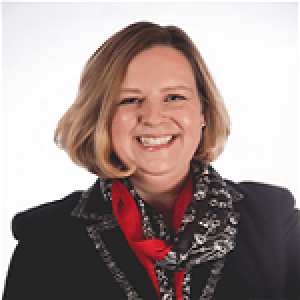
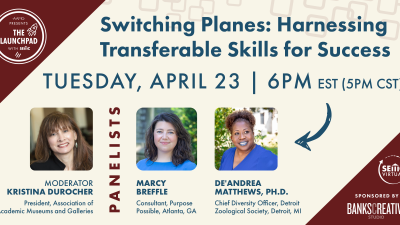



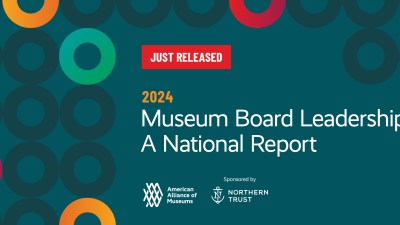
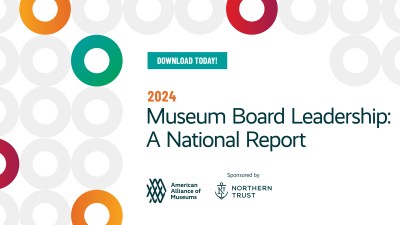
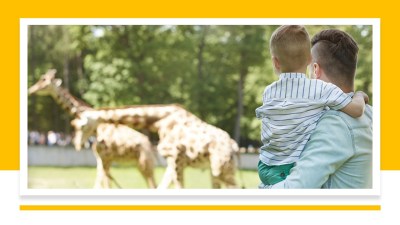
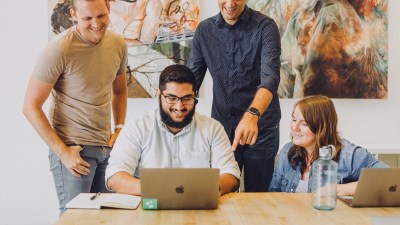
Comments
1 Comment